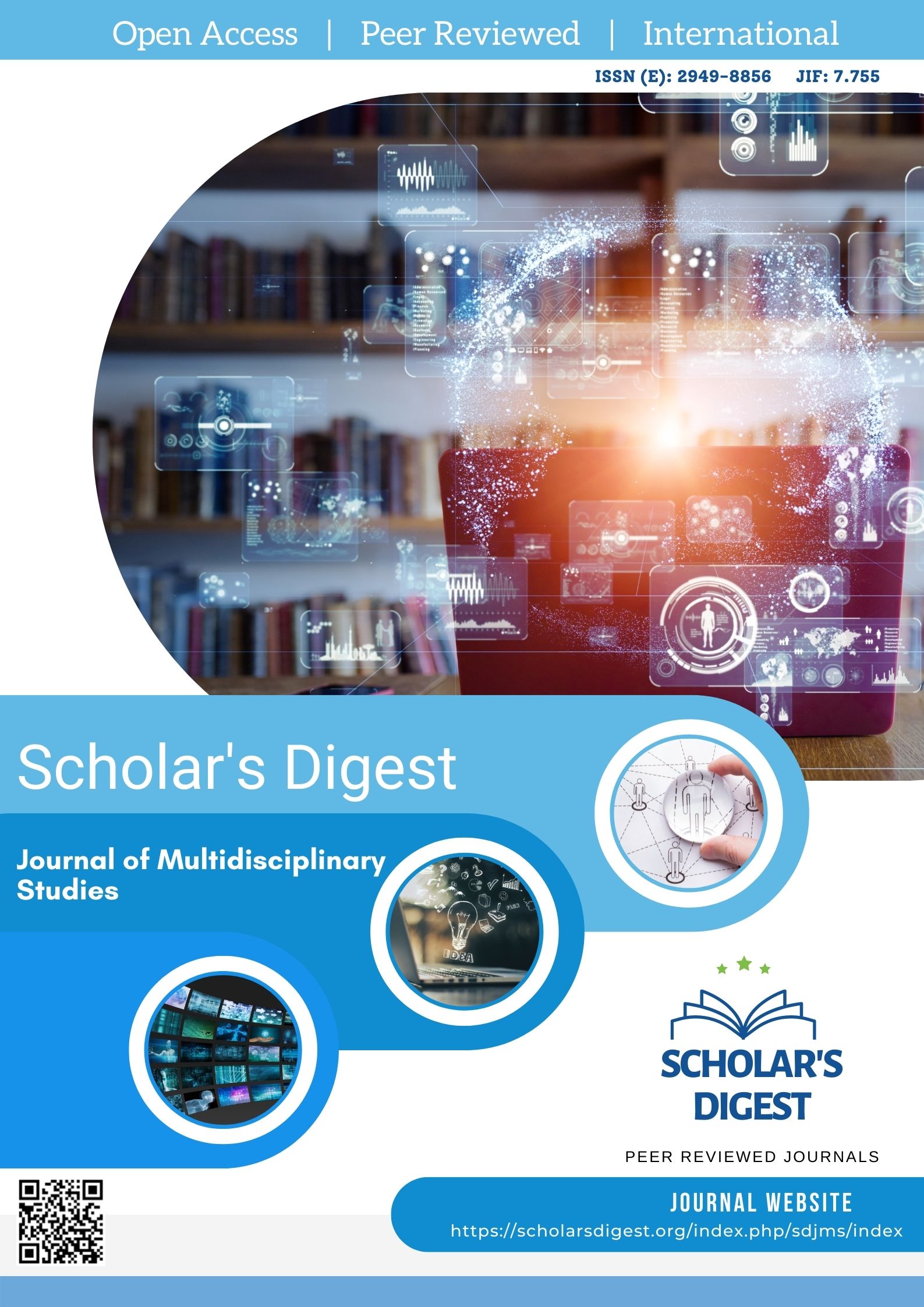EXAMINING THE ROLE OF STRUCTURED MOTOR TRAINING PROGRAMS IN ENHANCING SOCIAL INTERACTION AND MOTOR COORDINATION IN INDIVIDUALS WITH ASD
Keywords:
Autism spectrum disorder (ASD) - - Structured motor interventions - Social skills - Motor coordination and flexibility – Yoga.Abstract
Autism is a neurodevelopmental disorder characterized by problems in social communication, problems in motor coordination, poor interaction, and repetitive behaviors, which negatively affect their lives and cause them problems in adapting to their environment. The aim of this study was to know the effect of organized motor programs that target the development of social and motor skills in individuals with autism spectrum disorder, aged 10-16 years, by using two scientifically approved scales to evaluate the results: the Social Responsiveness Scale (SRS) to determine the level of improvement in social skills, and the Autism Diagnostic Observation Schedule (ADOS) to assess the improvement in motor skills. Both structured programs (structured physical training program and yoga training program) were implemented over a period of three months with two sessions per week. These two programs were implemented on a sample of 45 individuals with autism spectrum disorder, divided into three groups. The intervention group in each study participated in a structured program based on structured training, physical activities, group games, and various yoga exercises that aim to develop motor coordination and balance skills and develop social skills and social interaction for individuals. A set of tests were implemented before the start of the program and after the end of the program, where the results showed a significant improvement in social skills and motor skills in the yoga group, more than the physical exercise group, by 14.9%, in the yoga group, compared to 8.8% in the physical exercise group, and only 2.5% in the control group. In addition, the yoga group recorded the highest improvement in motor coordination, reaching 14.9%, compared to 8.8% in the physical exercise group. The results showed statistical significance using the analysis of variance (ANOVA) test at the significance level. The results confirm that interventions based on physical and motor activities can have positive results and noticeable changes in improving motor efficiency, coordination and motor balance. They can also be a strong motivation to improve social skills and increase social interaction among individuals with autism spectrum disorder, which positively reflects on the ability of this group to adapt in society and improve their quality of life and facilitate their integration into life with others.
References
Posar, A., & Visconti, P. (2023). Autism spectrum disorder in 2023: a challenge still open. Turkish Archives of Pediatrics, 58(6), 566.
Salama, W., Abdou, A. H., Mohamed, S. A. K., & Shehata, H. S. (2022). Impact of work stress and job burnout on turnover intentions among hotel employees. International Journal of Environmental Research and Public Health, 19(15), 9724.
Miller, T. N., Doel, P., Gutierrez, G., Besuner, R., Brooks, D., Gallo, G., ... & DESI Collaboration. (2024). The optical corrector for the dark energy spectroscopic instrument. The Astronomical Journal, 168(2), 95.
Bhat, M., Rabindranath, M., Chara, B. S., & Simonetto, D. A. (2023). Artificial intelligence, machine learning, and deep learning in liver transplantation. Journal of hepatology, 78(6), 1216-1233.
Bradley, E., & Bolton, P. (2006). Episodic psychiatric disorders in teenagers with learning disabilities with and without autism. The British Journal of Psychiatry, 189(4), 361-366.
Xiong, W., Tang, W., Zhang, G., Yang, Y., Fan, Y., Zhou, K., ... & Di, D. (2024). Controllable p-and n-type behaviours in emissive perovskite semiconductors. Nature, 633(8029), 344-350.
Gibbs, A. (2016). Academic freedom in international higher education: right or responsibility? Ethics and Education, 11(2), 175-185.
Caspersen, C. J., Powell, K. E., & Christenson, G. M. (1985). Physical activity, exercise, and physical fitness: definitions and distinctions for health-related research. Public health reports, 100(2), 126.
Downloads
Published
Issue
Section
License

This work is licensed under a Creative Commons Attribution-NonCommercial 4.0 International License.








